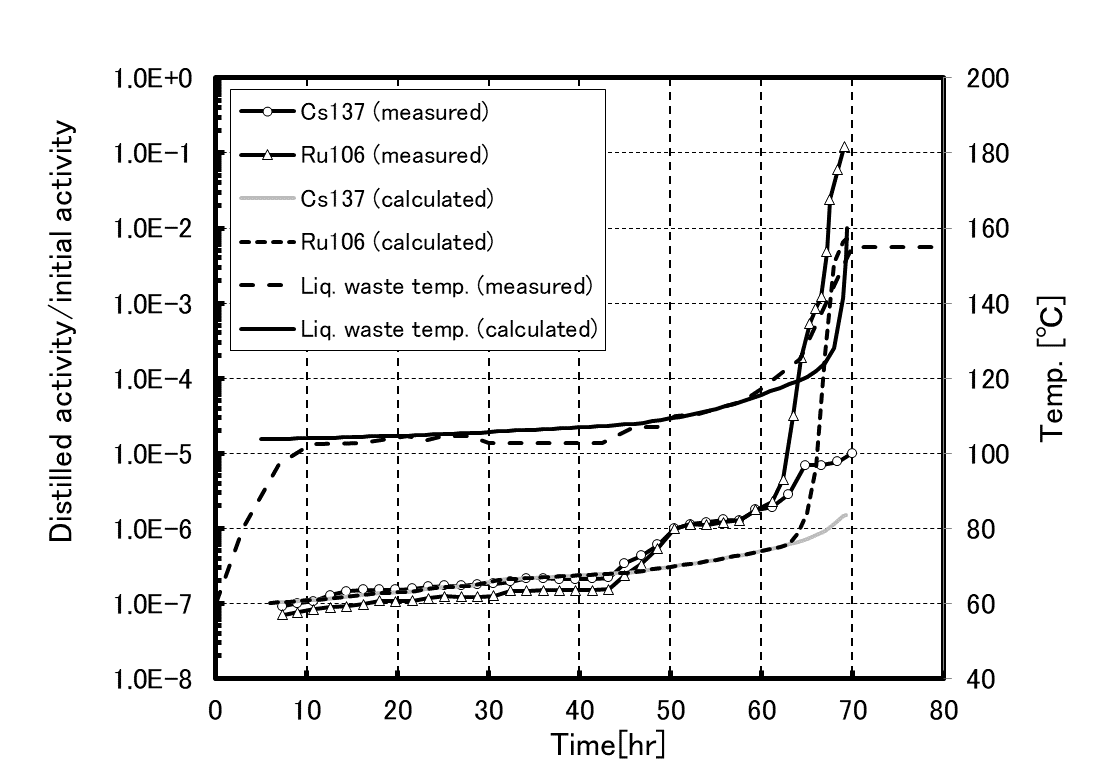Severe Accident Research Group
The severe accident (SA) is defined as an accident beyond the design basis accident for nuclear facilities. We have research activities on the evaluations of event progression and ‘source term’ which includes information on the types, physical/chemical forms and amounts of radioactive materials released to the environment and the release timing in the SA. Our objective is to support the establishment of risk informed, science based and rational nuclear safety regulation. Our research activities are effective to improve the evaluations of feasibility and effectiveness for various countermeasures against the accidents, and the assessment of continuous safety improvement at nuclear facilities. The research results are also utilized to make inputs for the accident consequence assessment code OSCAAR which evaluates the atmospheric dispersion of radioactive materials and the radiation dose of residents living near nuclear facilities during the accident.
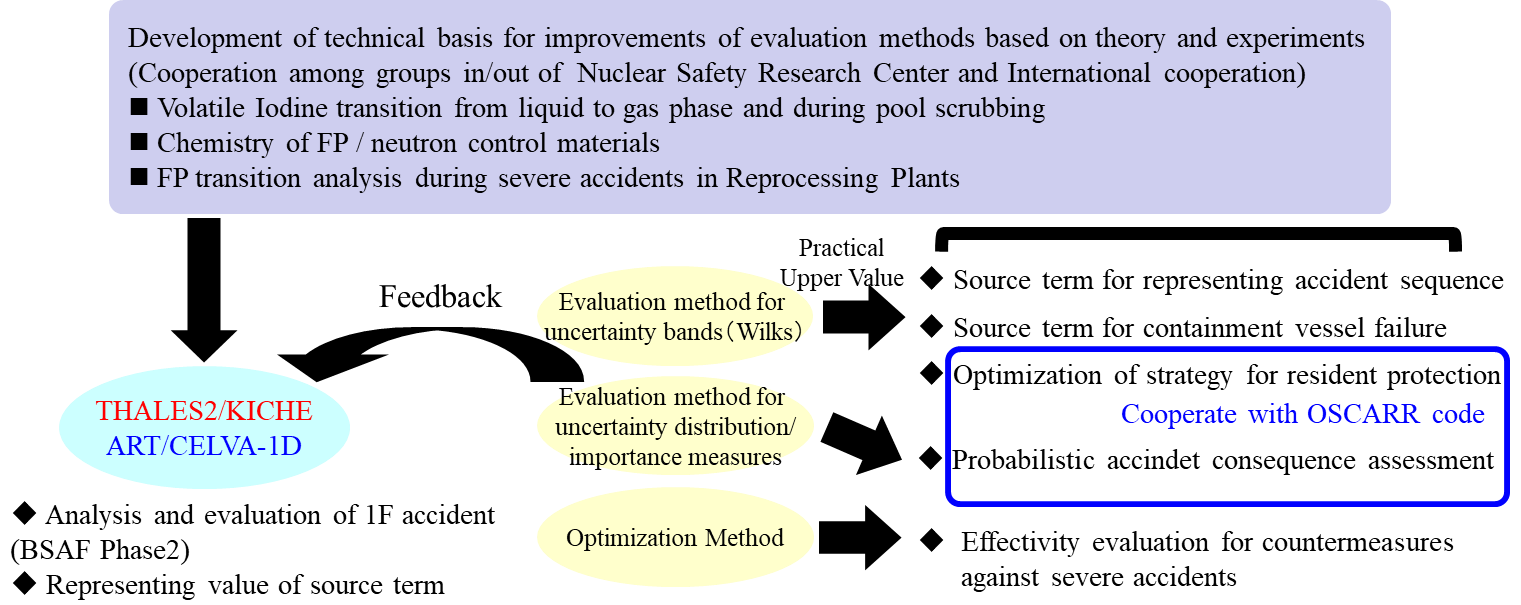
1. Severe accident research of nuclear power reactors
In order to evaluate accident progression and the source term in the SA conditions involving core damage, an integrated SA analysis code is needed, which can consider influence by complicated and diverse physical and chemical phenomena and accident mitigations by operator actions. Therefore, our research group is developing the integrated SA analysis code THALES2/KICHE. In our recent research, the development of the evaluation methodology for radionuclides behavior is in progress, which especially focuses on the chemical reactions of fission products (FPs), such as iodine (I) and cesium (Cs), in the reactor coolant system and containment. We apply this methodology to the accident analysis of TEPCO's Fukushima Daiich nuclear power station (NPS) and evaluate the status of core damage and the release amount of iodine and cesium to the environment. Furthermore, the development of the methodologies on the uncertainty and sensitivity analysis of source term and the optimization analysis for the effectiveness of SA countermeasures have been carried out in our group. By utilizing these methodologies effectively, we can identity the dominant factor for the source term and can evaluate the feasibility and effectiveness of SA countermeasures.

1.1 Research on FP chemistry for improvement of integrated severe accident analysis code
For source term evaluation, chemical behavior and chemical speciation of iodine and cesium, which are released from the reactor fuel, have large uncertainty and significant impact on the accident analyses including those for the TEPCO's Fukushima Daiichi NPS. We are carrying out estimation of the FP chemical speciation and clarification of possible influences of control/structural materials on the FP transport behavior using the analysis methods based on both the thermodynamic equilibrium and reaction kinetics. Recently, we showed the FP chemical forms in the reactor coolant system could shift the pH of containment pool water, which dominates the conversion rate of iodine ion dissolved in the water into highly volatile species (Figure 3). The outcomes of such researches will bring the improvement of source term evaluation methods.
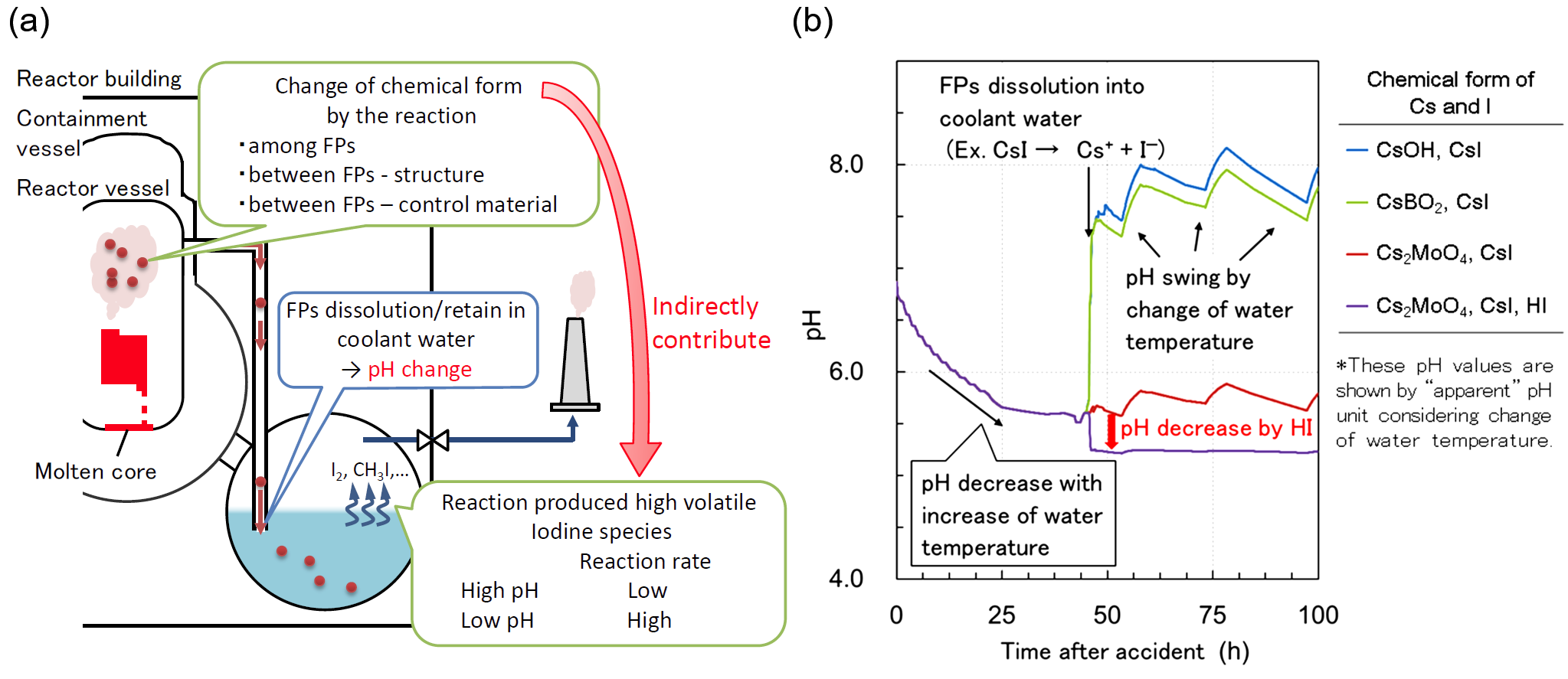
1.2 Development of uncertainty and sensitivity analysis methods for source term evaluation
Integrated computer codes, with many parametric models for complicated physical and chemical phenomena, are applied to simulate the progression of SAs. The results, however, include uncertainties mainly due to incomplete understanding of these phenomena. To enhance the reliability of simulation results and improve SA analysis codes, evaluation of latent output uncertainties by uncertainty analyses and identification of dominant input factors by sensitivity analyses are necessary. JAEA has developed a scheme for these analyses (Figure 4). The integrated SA code THALES2/KICHE, developed by JAEA with capabilities to simulate iodine chemistry and to consider various iodine chemical forms other than CsI, has also been applied to the source term uncertainty analysis, under the condition of various SA scenarios. It is foreseen that the latent uncertainty could be discovered and then reduced according to the sensitivity analysis.
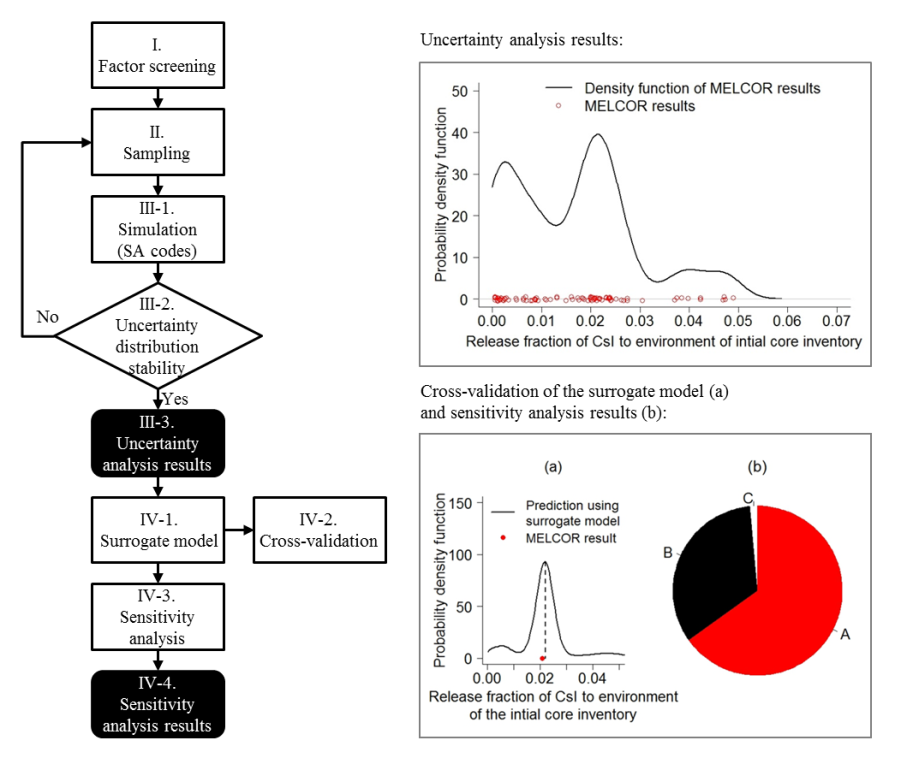
2. Severe accident research for nuclear fuel reprocessing plants
The “evaporation to dryness accident” caused by boiling of high-level liquid waste (HLLW) due to the loss of cooing function is postulated as one of the SAs with significant importance at the nuclear fuel reprocessing plant. During this accident, radioactive materials in airborne forms, such as aerosol, will be transferred in steam, nitric acid vapor and NOx gas, and be released to the environment with these carrier gases. Our research aims to develop the evaluation methodology for source term during this type of SA at the reprocessing plant. We are developing computational prediction models for the amounts and chemical forms of radioactive materials transferred from liquid phase to gas phase, and implementing the models to the FP transport behavior analysis code ART with a view to combined analyses with the thermal-hydraulics analysis code CELVA-1D.
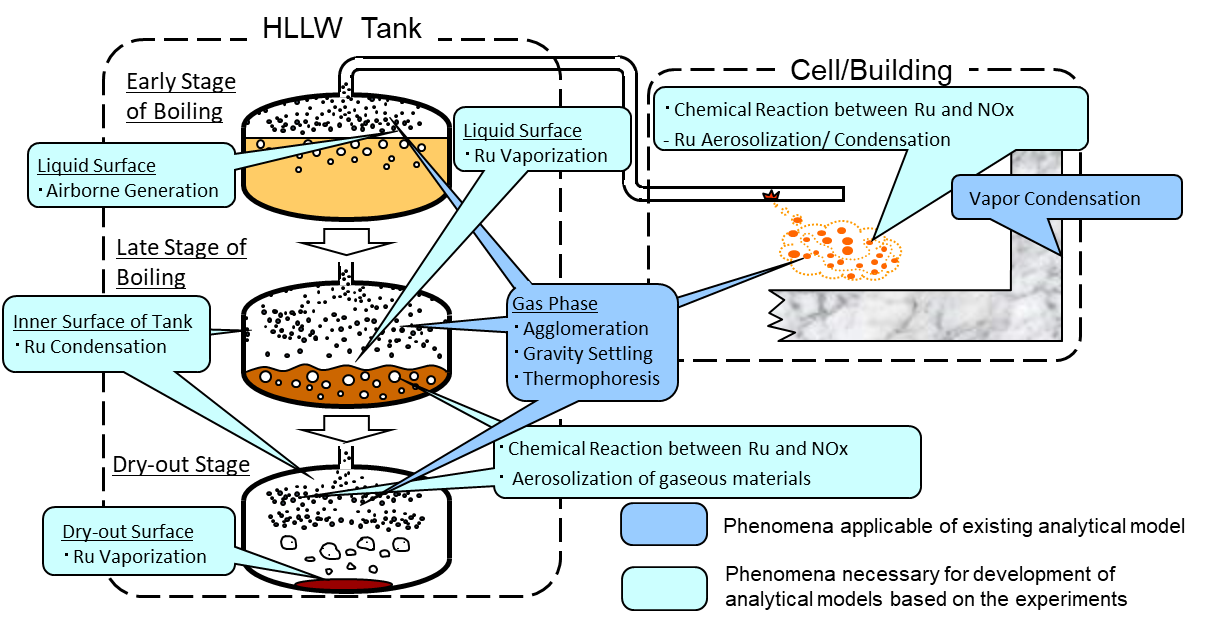
2.1 Development of simulation tools for HLLW evaporation to dryness accident
The transfer mechanism of radioactive materials from the liquid waste to gas phase in the evaporation to dryness accident is assumed as the following. At first, radioactive materials are assumed to be airborne by bubble burst and to be transferred to the gas phase by entrainment with upward flow. In the next stage, the liquid waste will be dried out due to continuous boiling. In this process, the radioactive materials transferred to gas phase are supposed to be mainly volatile ruthenium (Ru) species. We developed the calculation model which simulates the liquid waste boiling in order to estimate the amount of radioactive materials transferred to the environment. This calculation model includes the correlation equation between density of nitrate salt and mole fraction of nitric acid in liquid and gas phases, mechanistic entrainment correlation of droplet with upward flow and correlation of Ru transfer rate to gas phase. These correlations are derived from the results obtained from the experiments. The developed calculation model can reproduce the measured data of mass fraction of FPs transferred to gas phase to the initial inventory when the liquid waste temperature is under 120 degrees C.
